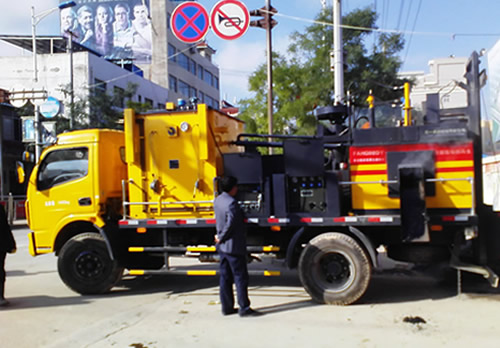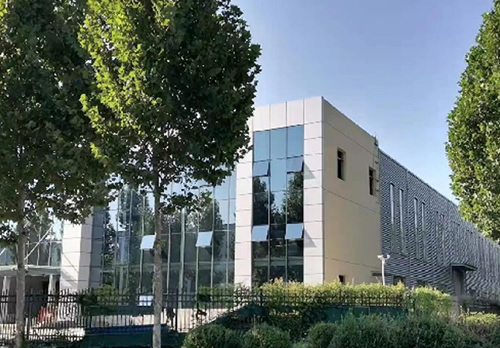Asphalt pavement hot recycling repair vehicle is an important equipment for modern road maintenance. It achieves the recycling of old asphalt pavement through processes such as heating, loosening, and adding rejuvenators, and has the advantages of high efficiency, environmental protection, and economy. However, the efficient operation of the equipment relies on scientific daily maintenance and timely repair. This article will explore in detail the daily maintenance and repair of asphalt pavement hot recycling repair vehicles, helping users extend the service life of equipment and improve operational efficiency.
1、 The Importance of Daily Maintenance
Daily maintenance is the foundation for ensuring the long-term stable operation of asphalt pavement hot recycling repair vehicles. Regular inspection, cleaning, lubrication, and maintenance can effectively prevent equipment failures, reduce maintenance costs, and extend equipment lifespan. Meanwhile, scientific maintenance can also improve the operational efficiency of equipment and ensure the quality of road repairs.
2、 Specific content of daily maintenance
Equipment cleaning
Vehicle cleaning: After each operation, promptly clean the asphalt residue, dust, and debris on the surface of the vehicle, especially key parts such as heating plates and tipping devices, to avoid corrosion and blockage.
Internal cleaning: Regularly clean the dust and oil stains inside the equipment, especially the core components such as hydraulic and electrical systems, to prevent malfunctions caused by dust accumulation.
Key component inspection
Heating system: Check whether the heating elements and temperature control devices of the heating plate are working properly, clean the carbon deposits and impurities on the surface of the heating plate, and ensure uniform heating.
Hydraulic system: Check the hydraulic oil level, oil quality, and pipeline connections to ensure no leaks or impurities. If hydraulic oil is found to be deteriorated or insufficient, it should be replaced or replenished in a timely manner.
Electrical system: Check electrical components such as cables, wiring terminals, and control panels to ensure they are not loose or damaged. Regularly clean the dust inside the electrical cabinet to prevent short circuits or malfunctions.
lubricating maintenance
Lubrication of moving parts: Regularly lubricate moving parts such as chains, bearings, and slides to reduce wear and friction. Use appropriate lubricants to avoid excessive or insufficient amounts.
Regeneration agent system maintenance: Check the regeneration agent pump, pipeline, and nozzle to ensure no blockage or leakage. Regularly clean the regeneration agent storage tank to prevent sediment from affecting the quality of the regeneration agent.
Tire and chassis inspection
Tire pressure check: Regularly check the tire pressure to ensure it is within the specified range. If insufficient or excessive air pressure is found, it should be adjusted in a timely manner to prevent tire wear or blowouts.
Chassis structure inspection: Check the chassis bolts, brackets, and other connecting components to ensure that they are not loose or deformed. If any abnormalities are found, they should be tightened or replaced in a timely manner.
3、 Key steps for maintenance and repair
Regular maintenance
Replace filter element: Regularly replace hydraulic oil filter element, air filter element, etc. to ensure system cleanliness. If the filter element is found to be blocked or damaged, it should be replaced in a timely manner to prevent impurities from entering the system.
Calibrate sensors: Regularly calibrate temperature sensors, pressure sensors, etc. to ensure their measurement accuracy. If sensor malfunction or excessive deviation is found, it should be adjusted or replaced in a timely manner.
Check the flatness of the heating plate: Regularly check the flatness of the heating plate to ensure good contact with the road surface. If the heating plate is found to be deformed or damaged, it should be repaired or replaced in a timely manner.
Fault diagnosis and troubleshooting
Heating system malfunction: If uneven heating or inability to heat is found on the heating plate, first check the heating element, temperature control device, and power connection. If the heating element is damaged, it should be replaced in a timely manner; If the temperature control device malfunctions, it should be recalibrated or replaced.
Hydraulic system malfunction: If insufficient pressure or slow action is found in the hydraulic system, first check the hydraulic oil level, oil quality, and pump operation. If the hydraulic oil deteriorates or is insufficient, it should be replaced or replenished in a timely manner; If the pump is damaged, it should be repaired or replaced.
Regeneration agent system malfunction: If uneven or unable to spray regeneration agent is found, first check the regeneration agent pump, pipeline, and nozzle. If the pump is damaged or the pipeline is blocked, it should be repaired or cleaned in a timely manner; If the nozzle is blocked, it should be cleaned or replaced.
Overhaul and Upgrade
Overhaul Plan: Develop a major overhaul plan based on equipment usage. The major overhaul includes replacing worn parts, inspecting key systems, and reapplying anti-corrosion coatings. After major repairs, a comprehensive functional test should be conducted to ensure that the equipment returns to normal.
Technological upgrade: With the development of technology, thermal regeneration repair vehicles can be upgraded, such as replacing high-efficiency heating elements, upgrading control systems, and adding intelligent functions. Technological upgrades can not only improve equipment performance, but also extend its service life.
4、 Safe operation and precautions
Operating specifications
Training operators: Operators should undergo professional training, familiarize themselves with equipment structure, working principles, and operating procedures. Untrained personnel are not allowed to operate the equipment.
Adhere to operating procedures: Strictly follow the operating procedures during operation to avoid misoperation or violation. If any equipment abnormalities are found, the machine should be stopped immediately for inspection, and the fault should be eliminated before continuing the operation.
safety protection
Wear protective equipment: Operators should wear safety helmets, protective gloves, protective goggles, etc. to prevent accidental injuries such as burns and cuts.
Set up warning signs: Warning signs should be set up around the work area to remind passing vehicles and pedestrians to pay attention to safety and prevent collisions or accidents.
Environmental requirements
Working environment: The hot regeneration repair vehicle should be operated in a well ventilated environment without flammable and explosive materials to prevent fires or explosions.
Weather conditions: Avoid working in harsh weather conditions such as rain, snow, and strong winds to prevent equipment from getting damp or damaged.
1、 The Importance of Daily Maintenance
Daily maintenance is the foundation for ensuring the long-term stable operation of asphalt pavement hot recycling repair vehicles. Regular inspection, cleaning, lubrication, and maintenance can effectively prevent equipment failures, reduce maintenance costs, and extend equipment lifespan. Meanwhile, scientific maintenance can also improve the operational efficiency of equipment and ensure the quality of road repairs.
2、 Specific content of daily maintenance
Equipment cleaning
Vehicle cleaning: After each operation, promptly clean the asphalt residue, dust, and debris on the surface of the vehicle, especially key parts such as heating plates and tipping devices, to avoid corrosion and blockage.
Internal cleaning: Regularly clean the dust and oil stains inside the equipment, especially the core components such as hydraulic and electrical systems, to prevent malfunctions caused by dust accumulation.
Key component inspection
Heating system: Check whether the heating elements and temperature control devices of the heating plate are working properly, clean the carbon deposits and impurities on the surface of the heating plate, and ensure uniform heating.
Hydraulic system: Check the hydraulic oil level, oil quality, and pipeline connections to ensure no leaks or impurities. If hydraulic oil is found to be deteriorated or insufficient, it should be replaced or replenished in a timely manner.
Electrical system: Check electrical components such as cables, wiring terminals, and control panels to ensure they are not loose or damaged. Regularly clean the dust inside the electrical cabinet to prevent short circuits or malfunctions.
lubricating maintenance
Lubrication of moving parts: Regularly lubricate moving parts such as chains, bearings, and slides to reduce wear and friction. Use appropriate lubricants to avoid excessive or insufficient amounts.
Regeneration agent system maintenance: Check the regeneration agent pump, pipeline, and nozzle to ensure no blockage or leakage. Regularly clean the regeneration agent storage tank to prevent sediment from affecting the quality of the regeneration agent.
Tire and chassis inspection
Tire pressure check: Regularly check the tire pressure to ensure it is within the specified range. If insufficient or excessive air pressure is found, it should be adjusted in a timely manner to prevent tire wear or blowouts.
Chassis structure inspection: Check the chassis bolts, brackets, and other connecting components to ensure that they are not loose or deformed. If any abnormalities are found, they should be tightened or replaced in a timely manner.
3、 Key steps for maintenance and repair
Regular maintenance
Replace filter element: Regularly replace hydraulic oil filter element, air filter element, etc. to ensure system cleanliness. If the filter element is found to be blocked or damaged, it should be replaced in a timely manner to prevent impurities from entering the system.
Calibrate sensors: Regularly calibrate temperature sensors, pressure sensors, etc. to ensure their measurement accuracy. If sensor malfunction or excessive deviation is found, it should be adjusted or replaced in a timely manner.
Check the flatness of the heating plate: Regularly check the flatness of the heating plate to ensure good contact with the road surface. If the heating plate is found to be deformed or damaged, it should be repaired or replaced in a timely manner.
Fault diagnosis and troubleshooting
Heating system malfunction: If uneven heating or inability to heat is found on the heating plate, first check the heating element, temperature control device, and power connection. If the heating element is damaged, it should be replaced in a timely manner; If the temperature control device malfunctions, it should be recalibrated or replaced.
Hydraulic system malfunction: If insufficient pressure or slow action is found in the hydraulic system, first check the hydraulic oil level, oil quality, and pump operation. If the hydraulic oil deteriorates or is insufficient, it should be replaced or replenished in a timely manner; If the pump is damaged, it should be repaired or replaced.
Regeneration agent system malfunction: If uneven or unable to spray regeneration agent is found, first check the regeneration agent pump, pipeline, and nozzle. If the pump is damaged or the pipeline is blocked, it should be repaired or cleaned in a timely manner; If the nozzle is blocked, it should be cleaned or replaced.
Overhaul and Upgrade
Overhaul Plan: Develop a major overhaul plan based on equipment usage. The major overhaul includes replacing worn parts, inspecting key systems, and reapplying anti-corrosion coatings. After major repairs, a comprehensive functional test should be conducted to ensure that the equipment returns to normal.
Technological upgrade: With the development of technology, thermal regeneration repair vehicles can be upgraded, such as replacing high-efficiency heating elements, upgrading control systems, and adding intelligent functions. Technological upgrades can not only improve equipment performance, but also extend its service life.
4、 Safe operation and precautions
Operating specifications
Training operators: Operators should undergo professional training, familiarize themselves with equipment structure, working principles, and operating procedures. Untrained personnel are not allowed to operate the equipment.
Adhere to operating procedures: Strictly follow the operating procedures during operation to avoid misoperation or violation. If any equipment abnormalities are found, the machine should be stopped immediately for inspection, and the fault should be eliminated before continuing the operation.
safety protection
Wear protective equipment: Operators should wear safety helmets, protective gloves, protective goggles, etc. to prevent accidental injuries such as burns and cuts.
Set up warning signs: Warning signs should be set up around the work area to remind passing vehicles and pedestrians to pay attention to safety and prevent collisions or accidents.
Environmental requirements
Working environment: The hot regeneration repair vehicle should be operated in a well ventilated environment without flammable and explosive materials to prevent fires or explosions.
Weather conditions: Avoid working in harsh weather conditions such as rain, snow, and strong winds to prevent equipment from getting damp or damaged.











 CALL
CALL PRODUCTS
PRODUCTS PROJECTS
PROJECTS CONTACT
CONTACT